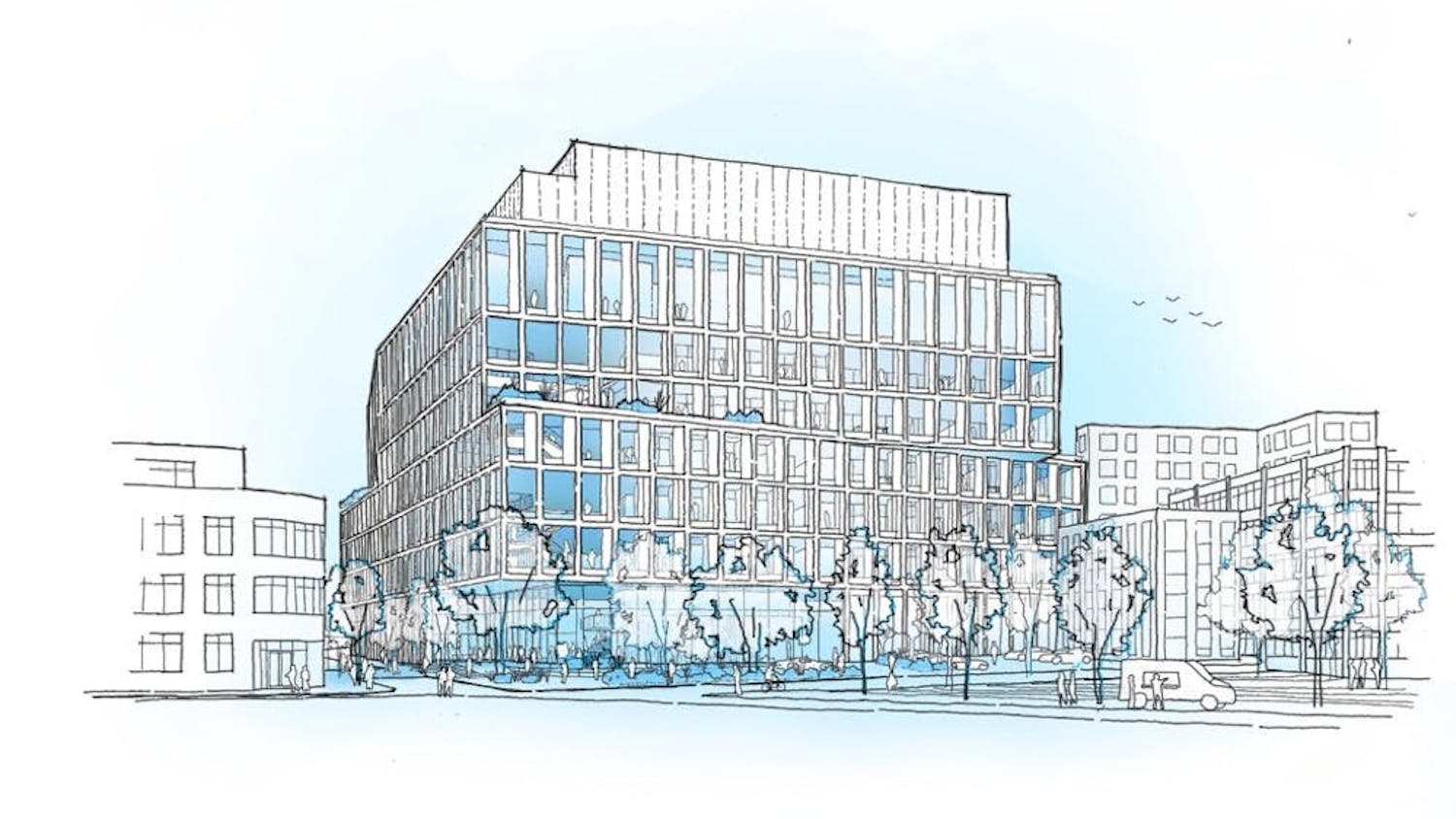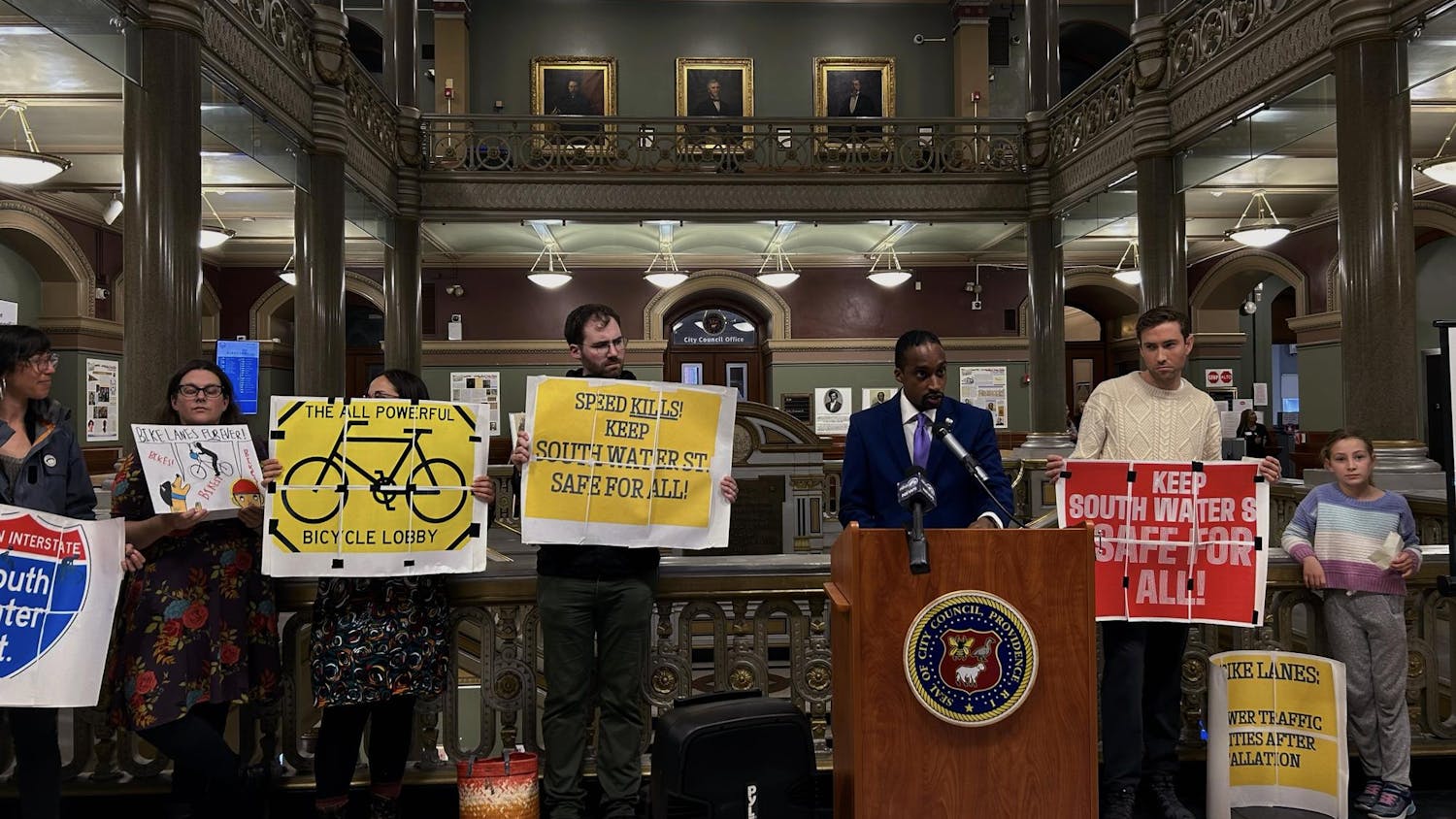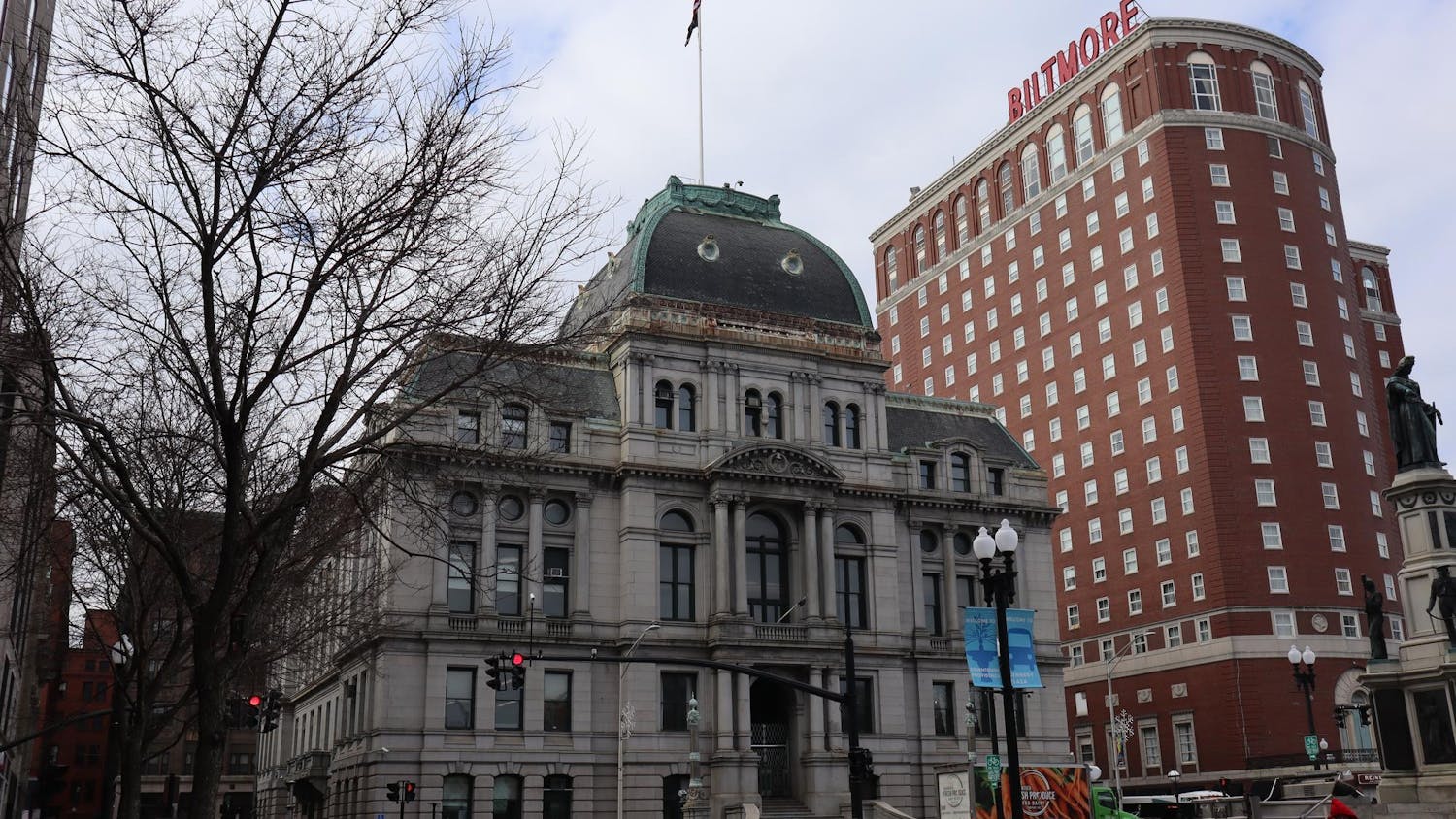The state's political leaders call it a once-in-a-generation economic opportunity. Set to be completed at the end of 2012, the 10-year relocation of Route 195 has cleared 20 acres of prime real estate in Providence's Fox Point and Jewelry District, some of which Brown is eyeing for further expansion.
The area, known as the Knowledge District, has been billed as a hub for research in medicine and the life sciences — an engine for growth in Rhode Island's still-struggling economy.
But there is currently no process in place to sell the land, and recent discussions have stalled on the issue of taxation, particularly for tax-exempt nonprofits like Brown. The prospect of subtracting land from the tax base of a city facing a two-year $122.6 million deficit by selling to a nonprofit has until now been a political non-starter.
The city's fiscal woes complicate Brown's expansion plans, said Richard Spies, executive vice president for planning and senior adviser to the president. "It means that what might seem like a really terrific idea, investment by a not-for-profit, all of a sudden seems a lot more scary for the city because they'd like to have some tax revenues from that," he said.
Now, the General Assembly is considering a bill that would finally establish a process for selling the land. For the city's expansion-minded nonprofits, the stakes are high.
My way or the Iway
In February, Gov. Lincoln Chafee '75 P'14 traveled to the Houston Medical Center with a delegation including President Ruth Simmons and Spies. None of the nonprofits associated with the 1,000-acre medical center pay property taxes.
The key to cultivating a hub of medical research and development like Houston's is collaboration, Chafee said at a hearing on the I-195 legislation.
But for Chafee, Providence Mayor Angel Taveras and state legislators, collaboration has not been entirely forthcoming. The question of creating a commission to oversee the disposal of the land has emerged as a sticking point between the governor and mayor. Chafee favors establishing a commission to streamline zoning, permitting and selling the land, which is currently owned by the state's Department of Transportation.
Taveras opposes the commission and hired a private design firm in March to zone and plan the area. The firm's study —funded with federal dollars — will be complete in September. Taveras has publicly stated his support for the current bill.
The bill will most likely be revised before passage, said Sen. Dominick Ruggerio, D-Providence. Ruggerio, the legislation's sponsor, is meeting with city stakeholders and estimates that legislation regulating the disposal of the land will not be passed until June at the earliest.
His bill sets out guidelines for selling or leasing the land and stipulates it should be disposed of in a way that benefits the public interest. But the bill's most important language concerns taxation. If a nonprofit cannot come to an agreement with the city on a voluntary tax contribution, the Department of Transportation may require that it pay property taxes in full.
For Spies, this provision is simply not applicable. "I say, if the city doesn't agree, then we're not going" to buy the land, he said.
Triggering investment
While many are concerned Brown's tax-exempt status means it will not have to pay taxes on I-195 land, the University currently pays the full value of property taxes on all but one of its Jewelry District buildings purchased in the past decade. That one building, at 70 Ship St., was the first building the University purchased in the Jewelry District and is home to the Alpert Medical School's Laboratories for Molecular Medicine.
Brown currently owns 11 buildings and leases two in the Jewelry District, all of which were purchased from private sellers. The I-195 parcels it has expressed interest in are located to the north of its current holdings.
Brown is not the only nonprofit looking to purchase I-195 land. Since 2008, Johnson and Wales University has expressed interest in land bordering its current holdings, which would be used for "immediate needs," including academic buildings and student dormitories, said Lisa Pelosi, a spokesperson for Johnson and Wales.
The I-195 land is also a potential site of expansion for the state's public universities and private hospitals, which, unlike the city's private universities, make no payments to the city in lieu of taxes. The University of Rhode Island and Rhode Island College have proposed creating a combined nursing building on the I-195 land in the Jewelry District.
"The Brown Medical School on Richmond Street hopefully is going to be a trigger for additional investment in the health sciences in that area," said Edward Quinlan, president of the Hospital Association of Rhode Island.
The state's private universities have been more specific in expressing which parcels of the I-195 land they would like to purchase, and until there is a clear structure in place for selling the land, other institutions will be less precise, Quinlan added.
‘Economic powerhouses'
When Taveras addressed the Fox Point Neighborhood Association at its March board meeting, he told attendees that all options to reduce the city's deficit were being considered — even further raising the city's high property taxes.
Fox Point residents understand the role that Brown plays in the state's economy, said John Rousseau, a member of the Fox Point Neighborhood Association. But they also want others to bear the burden of paying for Providence's fiscal problems. "Otherwise, we'll just continue to be the only people taxed in town," he said.
But many witnesses at the April 14 hearing on Ruggerio's I-195 legislation were less measured in their remarks about the University. Some asked what gives Brown the right to expand into the Jewelry District without paying taxes on valuable property. Homeowners are suffering under the burden of high property taxes — why can't Brown pay more?
Colleges like Brown are now "economic powerhouses" with more to their mission than simply teaching students, said Mike Patch, president of the Providence Apartment Association, at the hearing.
While the leadership of the Jewelry District Association does not always agree with the city's universities, the Jewelry District is ripe for new development, said Phoebe Blake, head of the planning and zoning committee of the association.
"Fifty percent of the land area here is surface parking lots," she said. "We are looking forward to development."
Brown is conscious of its public perception, but its actions are not dictated by it, Spies said. Unlike the city's public school system, which the mayor has targeted for millions of dollars in cuts by firing teachers and closing schools, Taveras does not directly control private universities like Brown. This, Spies acknowledged, presents a challenge for the mayor.
While the University wants to assist the city, contributions should "be defined in terms of our mission, which is teaching and research," Spies said. "It's not to fund the city and everything that comes with it."
Reaching an understanding
In 2003, Brown, the Rhode Island School of Design, Providence College and Johnson and Wales signed a memorandum of understanding with the city of Providence stipulating that the institutions would contribute nearly $50 million in voluntary contributions over 20 years. Tax-exempt nonprofits own 15 percent of the land in Providence, according to a November 2010 Providence City Council Report.
In fiscal year 2009, Brown paid $3.34 million in property taxes and voluntary payments to the city. Since 2009, none of the University's property has been taken off the tax rolls, a process that would require Brown to gradually draw down tax payments under the a
greement. While discussion has taken place about establishing a different agreement for the I-195 land, no such agreement currently exists, Spies wrote in an email to The Herald.
Since the 2003 memorandum, made during the administration of former Mayor and current Rep. David Cicilline '83, D-RI, Providence's financial outlook has darkened. Cicilline's successor, Taveras, has publicly stated his willingness to keep all options on the table to raise revenue — including taxing student dormitories, imposing a mandatory student residence fee and increasing the amount that the University pays in exchange for city services.
The Taveras administration has not approached the University about specific proposals, Spies said, but conversations about Brown's contributions to Providence are ongoing.
Taveras is not the only New England mayor to consider further taxing nonprofits. In Boston, Mayor Thomas Menino has issued letters to the city's nonprofits seeking contributions of as much as 25 percent of what they would pay if they paid property taxes in full. Like Providence's agreement, Boston nonprofits also make voluntary payments.
Similar payment programs for nonprofits also exist in Baltimore, Bristol, Detroit and Cambridge, Mass. Providence's agreement with nonprofits generated $2.5 million in fiscal year 2010, roughly $2 million less than similar agreements garnered in Cambridge and New Haven in recent years, according to a 2010 report by the Lincoln Institute of Land Policy.
But discussions about taxing the I-195 land are complicated by the fact that nonprofits are the only entities that have openly expressed interest in the land so far, according to Spies. There has not yet been a public bidding process on the land. "There isn't anybody lined up to pay taxes, so they're not choosing between a tax-exempt investment and a taxable investment," Spies said.
Brown's expansion over the next decade is inevitable, Spies added, but whether that development occurs in the Jewelry District is not.
"If the Jewelry District is a place where everyone would like us to concentrate at least some of our growth, then that will happen," he said. "If the decision is that isn't a good place because there are better uses for it, then it will go someplace else."




